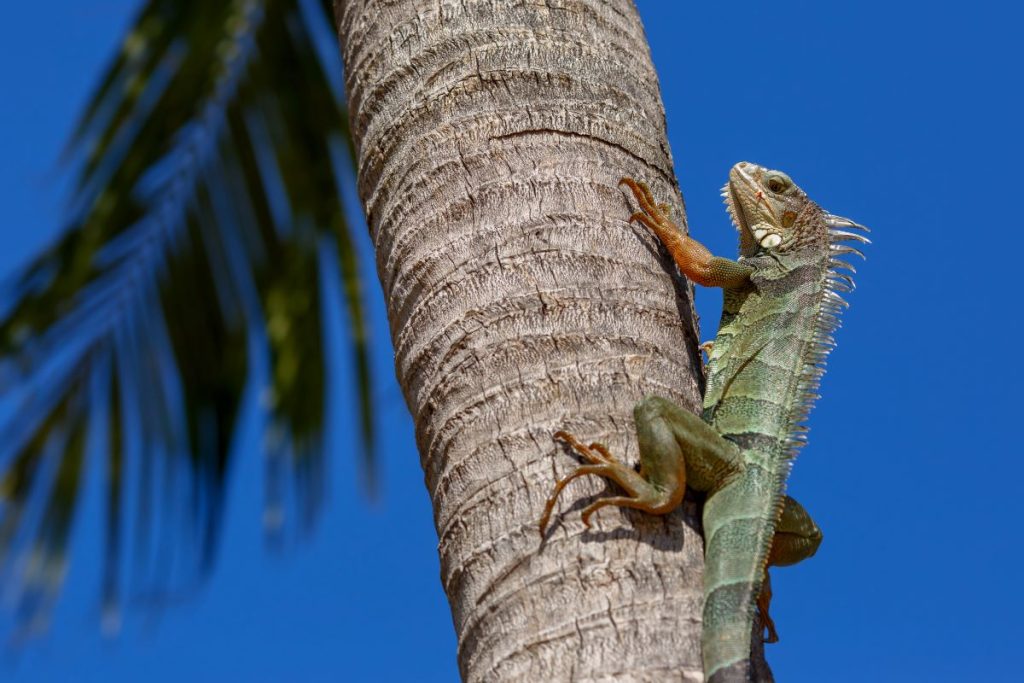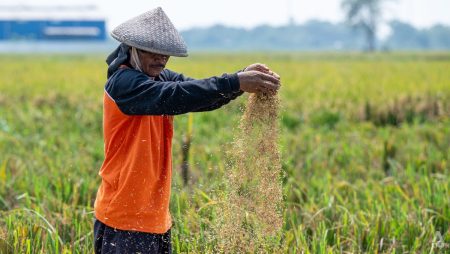The unusual cold snap sweeping across Florida has brought with it a peculiar phenomenon: falling iguanas. These large, non-native reptiles, accustomed to the state’s subtropical climate, are experiencing a rude awakening as temperatures plummet well below their comfort zone. The sudden drop, with temperatures as much as 25 degrees below normal, triggers a state of cold-induced lethargy in the iguanas, causing them to lose their grip on tree branches and tumble to the ground. This spectacle, while seemingly comical to some, presents potential hazards to both the iguanas and the unsuspecting public. The immobile, yet still living, reptiles can pose a surprising obstacle for pedestrians and vehicles. Furthermore, well-meaning but misinformed residents may attempt to handle or relocate the stunned creatures, actions that can be detrimental to the iguanas and violate Florida law.
The plummeting temperatures, a stark departure from the norm, are stressing the cold-blooded iguanas beyond their physiological limits. While they appear frozen, the iguanas are simply in a state of temporary dormancy, a survival mechanism triggered by the extreme cold. They remain alive, awaiting the return of warmer temperatures to revive them. This vulnerability underscores the delicate balance between invasive species and their adopted environments. The iguanas, originally from warmer climates, have thrived in Florida’s typically mild winters. However, these unusual cold snaps expose their susceptibility to extreme weather events, highlighting the potential impact of climate variability on non-native species.
The unexpected cold snap serves as a reminder of the importance of understanding and respecting wildlife, even those considered invasive. Encountering a seemingly frozen iguana can be startling, but it’s crucial to remember that intervention, however well-intentioned, can be harmful. Relocating the iguanas is not only counterproductive but also illegal. These reptiles are designated as an invasive species in Florida, and moving them to different locations can exacerbate the ecological issues they create. Interference can disrupt the natural processes that regulate their population and potentially introduce them to new, vulnerable ecosystems. Therefore, the best approach is to leave the iguanas undisturbed and allow them to recover naturally as the temperature rises.
The presence of green iguanas in Florida is a direct result of human introduction. Originating from Central and South America, these reptiles arrived in the state as exotic pets during the 1960s. Irresponsible pet owners, overwhelmed by the iguanas’ size and care requirements, released them into the wild. Florida’s subtropical climate proved hospitable, and the iguanas, lacking natural predators, thrived and proliferated. Their expanding population has since become a significant ecological concern. They consume native vegetation, disrupt natural habitats, and pose a potential threat to endangered species. The current cold snap, while distressing, may offer a temporary check on their population growth.
Experts and officials have weighed in on the iguana situation, offering both scientific explanations and practical advice. Conservation biologists emphasize the unusual nature of the event, highlighting the potential risks to both iguanas and humans. Meteorologists, meanwhile, provide context for the extreme weather, predicting the duration and severity of the cold snap. Wildlife control specialists stress the legal ramifications of relocating iguanas, urging residents to refrain from interfering with the animals. This chorus of voices underscores the complex interplay of environmental factors, human actions, and legal regulations that shape the iguana issue in Florida.
Looking ahead, the iguana population faces continued vulnerability as the cold weather persists. The extended period of low temperatures could lead to further instances of cold-stunned iguanas falling from trees. Residents are encouraged to remain vigilant and exercise caution, avoiding direct contact with the reptiles. As temperatures eventually rise, the iguanas are expected to recover and resume their normal activities. In the long term, managing the iguana population remains a complex challenge requiring a multi-faceted approach. Property owners can take preventative measures, such as trimming tree branches near structures, to deter iguanas. However, addressing the broader issue of invasive species requires ongoing research, responsible pet ownership practices, and effective wildlife management strategies.










